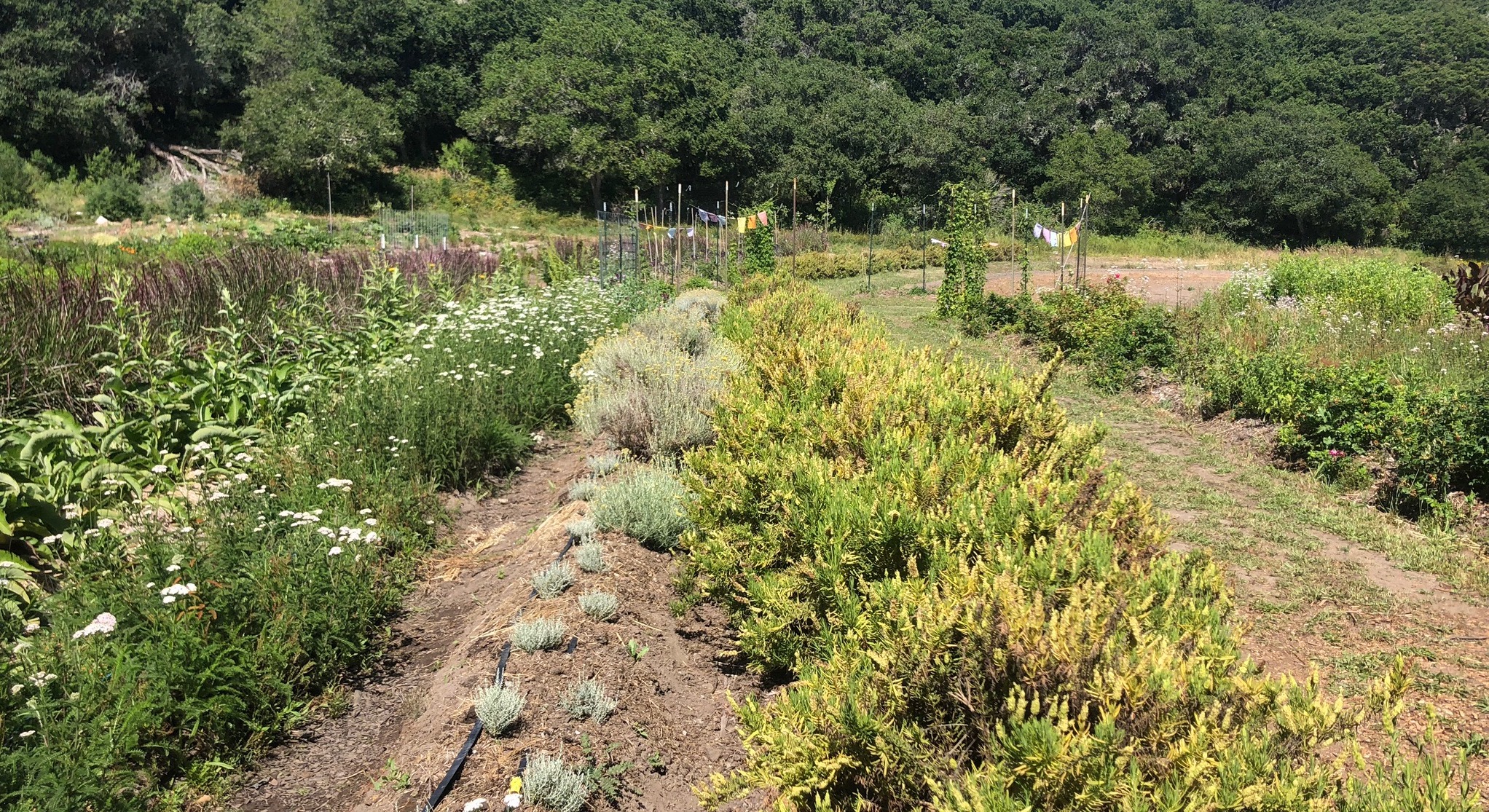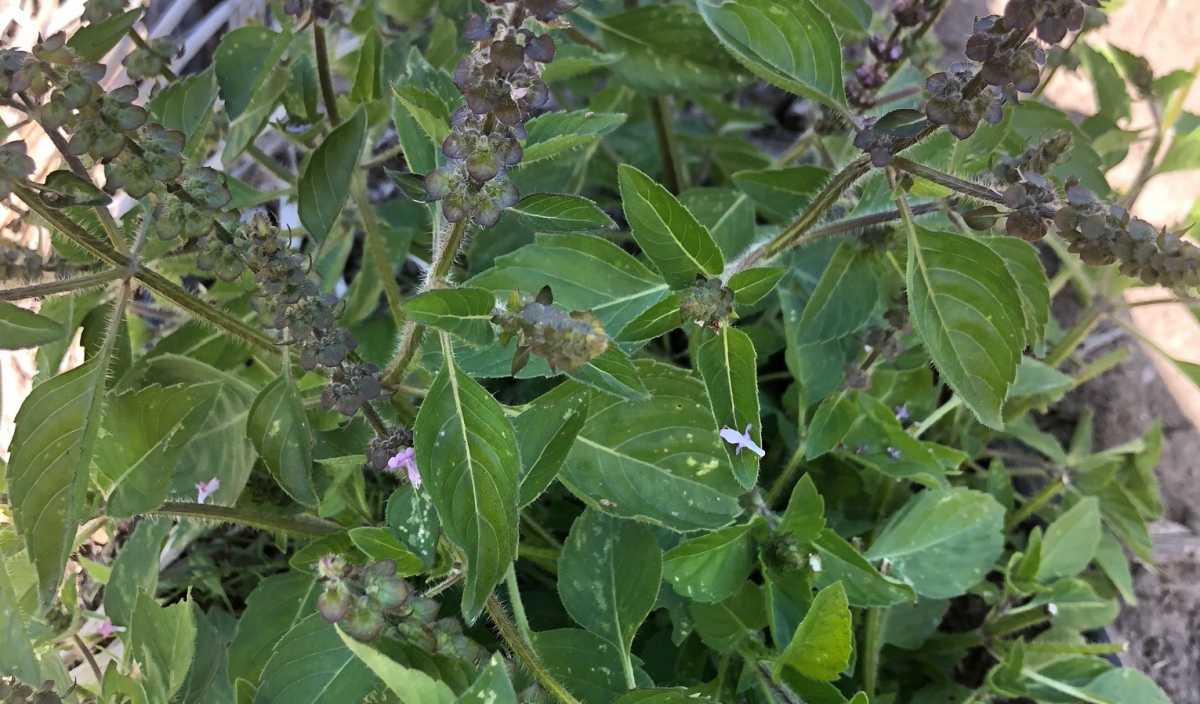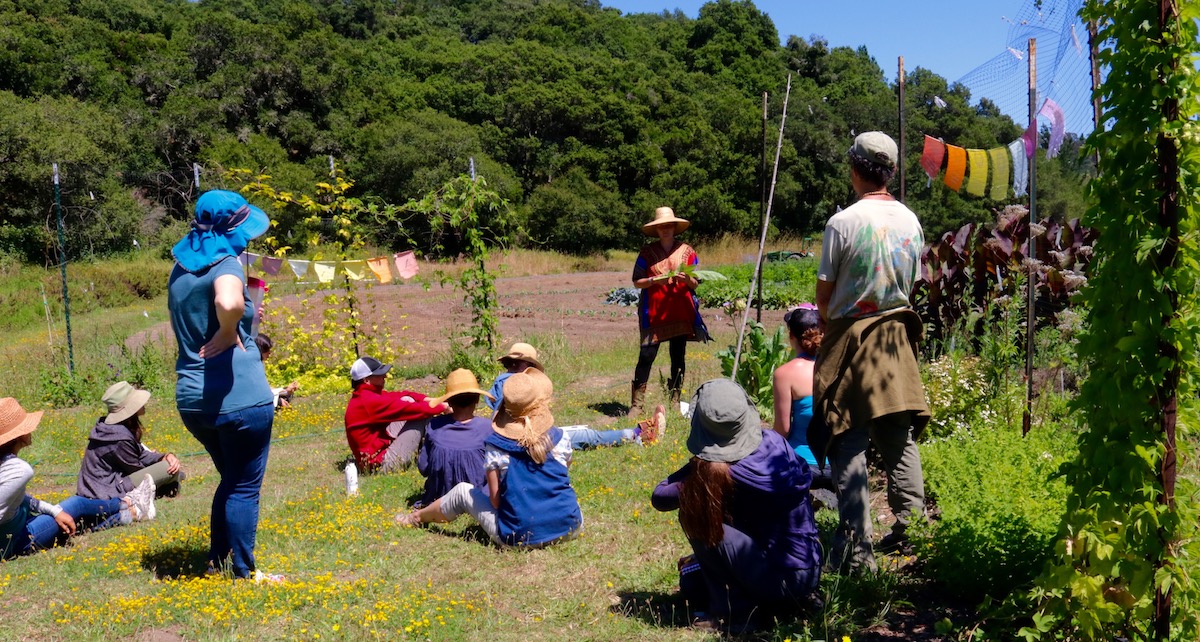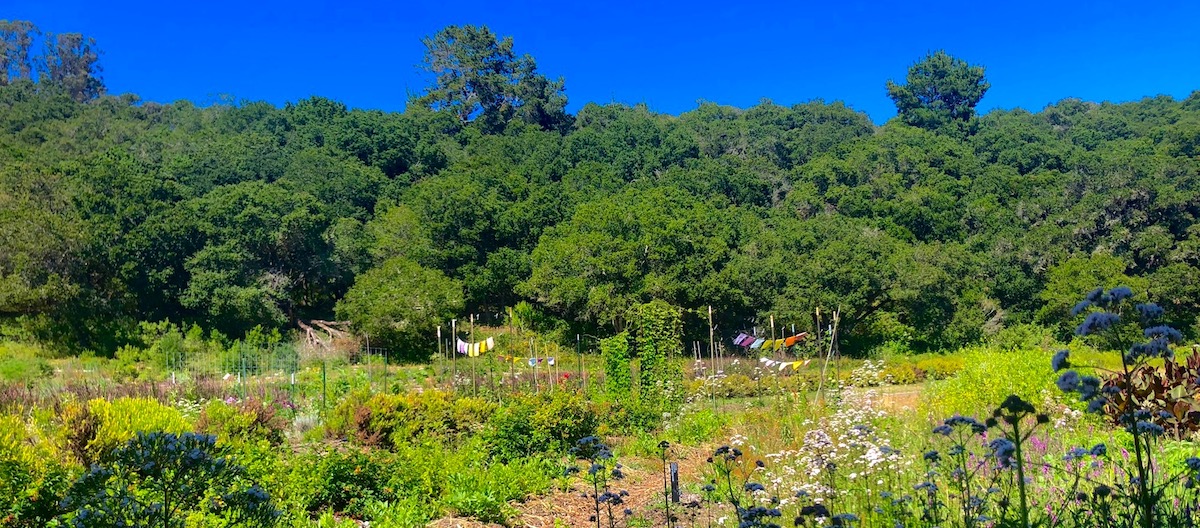
An herbalism workshop at Blossom’s Farm illuminates the power of consciously grown herbs
By Maria Grusauskas
The sun breaks through the coastal fog around 10:30 a.m., and the rows of herbs growing at Blossoms Farm are suddenly drenched in golden heat. Blossom's, an herb farm in Corralitos, California, is complete with pigs, Scottish highland cows, chickens, ducks, a compost (the digestive system of the farm), and a “skin” around its perimeter of oaks and eucalyptus. It is a living, breathing example of the biodynamic farm as an organism.
I am at the farm for a biodynamic herbalism workshop, along with 20 or so others interested in plant medicine and biodynamics. We gather first around a large table in the farm’s outdoor kitchen, taking notes from the blackboard on the threefold human being and the doctrine of signatures, and the breathing in-and-out cycle of the farm driven by the rhythm of days, seasons, moon phases, and planetary positions. It’s fascinating and at times abstract, but the hands-on plant harvest, timed with the sun’s arrival, is my favorite moment of the day.
“We will harvest silently,” says Carin Fortin, a farmer and herbalist who co-owns Blossom’s Farm with her husband Delmar McComb, a biodynamic farmer and manager at nearby Suncrest Nursery, which he’s transitioned from conventional to Biodynamic® methods.
“As you harvest, take time to feel and smell the plant, and see how it makes you feel,” Fortin says.
With the sun at our backs, we spread out to squat among the rows of herbs. This morning’s focus is tulsi, also known as holy basil. Tulsi is one of the many herbs best harvested in the morning, when the oils are most potent, or when the plant’s chi is fully in its flowers and stalks, Fortin had explained. In the natural rhythm, the breathing in and out of energy, the plants’ chi is drawn down into the roots in the evening hours.

Tulsi, also known as holy basil
With scissors we silently snip tulsi spires of tiny purple flowers, leaving about six inches below for the plant to keep growing. At once we’re met with the pungent astringency of the plant—a distinct smell that is hard to describe, though we’ll try, later, and has many layers—fruity, minty, the tiniest touch of wet blanket.
In silence we are able to take in the plant, watch the bees interacting with its flowers, and really just be in the moment—if not slightly sedated by the plant’s properties; we all later report a calmness. When our baskets are mounding full, we take them to another area where haybales serve as seats for an outdoor classroom whose focal point is Blossom’s copper still. It is this still that turns Blossom’s herbs into their line of hydrosols, each with their unique properties, scents, and effects.
As a few volunteers continue to snip the tulsi into smaller pieces (“More surface area,” says Carin), we learn about the mythology of tulsi as a protector, as well as its medicinal qualities, which include antimicrobial and antibacterial properties, and a comforting, calming sedative against anxiety. It’s also considered an adaptogen, addressing all three systems to bring the body into balance. It is a natural preservative, good for the lungs and colds, and is the quintessential female herb. From the biodynamic perspective, it is ruled by Mars, whose influence pierces the air and penetrates space.
“Hydrosol is the marriage of water and oil,” says Fortin. “It’s alchemy, because it does not happen in nature.”
Blossom’s grows more than 100 different kinds of herbs, and the workshop includes a farm tour, during which I fill 10 notebook pages with notes about the herbs and their various properties and mythologies. I also eat many leaves—the very bitter feverfew, which is a powerful soother for headaches and migraines, and gotu kola to sharpen the mind, the feathery, bitter leaves of which support the liver.

Carin Fortin (center) teaches about biodynamically grown medicinal plants
“When you eat bitter-tasting plants, your body is alerted, and the gastric juices and saliva get going to mitigate that bitter, which is what you want if you have slow digestion,” says Fortin.
The climate here is Mediterranean, and many of the herbs hail from origins in Chile, South Africa, and Japan. “After years growing them here, they become of the place. This is California tulsi now,” says Fortin. “We want to be inclusive, and yet we want to create individuality,” adds McComb.
Just like it’s best to eat locally grown foods, it’s wise to use locally grown plants whenever possible, because it means the plants are adapted to the same climate that your own body is adapted to, she explains. This way, they can do their job fully.
Mirroring the Cosmos
Blossom’s is also very much in tune to the macrocosm as it grows its medicines. Fortin quotes Paracelsus, a Swiss physician, alchemist, and astrologer: “There is nothing earthly which has not its mirror in the cosmos.”
Before sharing a beautiful potluck lunch, McComb gives a talk about the differences between organics and biodynamics. Though all farms that practice biodynamics are inherently organic, there are many differences—including specific biodynamic preparations applied to enhance natural processes, and an eye to the farm as an organism that includes all plant, animal, insec,t and human interactions. Fortin chimes in when prompted. The two are a dynamic duo in their approach to educating, with a lightness and humor in their teaching style.

Carin Fortin and Delmar McComb
“If you think about human beings before they were manifested into physical beings, before the plant and animal and mineral kingdoms, then a plant is actually a separated-out extension of the human being in this approach,” McComb explains. He has a way of presenting the most abstract of biodynamic concepts in a way that makes sense, though it always stretches the mind.
“Every medicinal plant is a plant that overcomes something. When we are ill, we are out of tune,” says Fortin. “Plants are overcoming a struggle, a challenge.” Take plantain, a drought-tolerant plant that must overcome harsh and dry conditions; it effectively draws the venom out of a bee sting when applied as a poultice to the skin.
Several hours later, I leave with the smell of so many herbs on my fingers, a great sense of calm and intrigue, and my consciousness open to the fascinating world of plants as medicine and as an “extension of the human being.” I’ve also come away with a newfound hope that the human being may just evolve beyond the current trauma of the times—that the very species responsible for environmental destruction may actually play the most crucial of roles in that evolution.
For more information on Blossom’s Farm’s philosophy, herbal remedies for sale, and on-site events, visit blossomsfarm.com or email info@blossomsfarm.com.


Añadir nuevo comentario